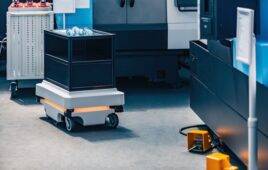The three-year DYMASOS project has tackled the management of systems of systems – how independent technologies can be harnessed to work together to optimise overall outcomes. With the development of the ‘Internet of Things’, the ability to do this is becoming even more important.
Our future is likely to rely on many ‘systems of systems’ – networks of technical operations, that work independently, but need to act together. Creating conditions for all sorts of systems to work together could be the next step in optimising technological efficiency. Ending in September 2016, the EU-funded DYMASOS (Dynamic Management of Physically Coupled Systems of Systems) project has developed new management methods and engineering tools for these ‘cyber-physical’ systems of systems. Improved management leads to better performance and could significantly reduce our consumption of resources and carbon footprints.
‘The project has made an important contribution in taking first concrete steps into realising and concretising a novel field of research – the Internet of Things,’ says Dr. Iiro Harjunkoski, from ABB Corporate Research in Germany and a member of the DYMASOS consortium. This will enable everyday objects to be networked via the internet, allowing them to send and receive data and giving any system the capacity to be ‘smart’ and coordinate with other systems.
Real industrial case studies
DYMASOS was based on real industrial case studies. These were underpinned by a thorough analysis of markets, industrial needs, and challenges of the industrial project partners.’The research was steered by the application cases but nonetheless also geared towards obtaining fundamental results and new insights.’ explains project co-ordinator, Professor Sebastian Engell of Technische Universität Dortmund.
The focus of the case studies were in the fields of chemical production, from companies, BASF and INEOS, both among the largest chemicals producers in the world, and in the operation and engineering of electric power distribution and electric vehicle charging infrastructures, using data from HEP ODS, Croatia, and AYESA, Spain. ‘The realistic modelling and simulation of DYMASOS is one of the critical issues addressed by the project,’ says Dr Patrick Panciatici, Scientific Advisor at RTE, France.
DYMASOS developed four different approaches to modelling systems of systems. In a comparison to the behaviour of biological systems, ETH Zurich looked at understanding and controlling population behaviour. They looked, for example at modelling the overnight recharging behaviour of electric car owners, knowing only information about average population behaviour. An electric vehicle case study from the city of Malaga carried out by the University of Seville, modelled coalitional control – how to jointly optimise the behaviour of different elements in a process.
TU Dortmund also modelled market-like mechanisms that try to optimise results by dynamic price-setting or constraining resources to balance supply and demand; this was applied to a petrochemical site of INEOS in Cologne and a reactor system at BASF. The University of Zagreb developed a hierarchical control model; where the grid configuration can change dynamically to minimise power losses, based on an electric distribution grid case study provided by HEP ODS.
Wider implementation
Large-scale simulations of these complex systems successfully validated the management and control algorithms produced. The DYMASOS Engineering Platform provides guidelines for the design of evolving systems of systems that can balance local autonomy and global management.
DYNAMOS member, Mark Lewis, a Low Carbon Consultant at Tees Valley Unlimited, in the UK says,’the project has developed a number of practical demonstrations which will interest other complexes within and across companies and organisations to start to take further interest.’
Industrial project members are now implementing the solutions developed by DYMASOS and this will give European operators of large technical systems and providers of management and automation solutions strategic competitive advantages, including cost savings, energy efficiency, higher stability and improved resilience to faults and changes in demand.
Filed Under: Industrial automation




